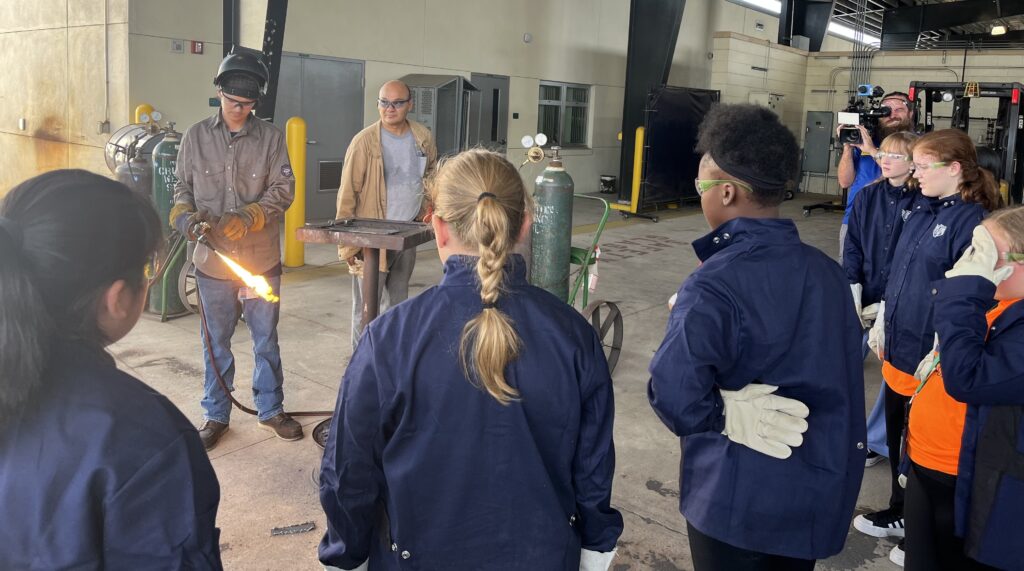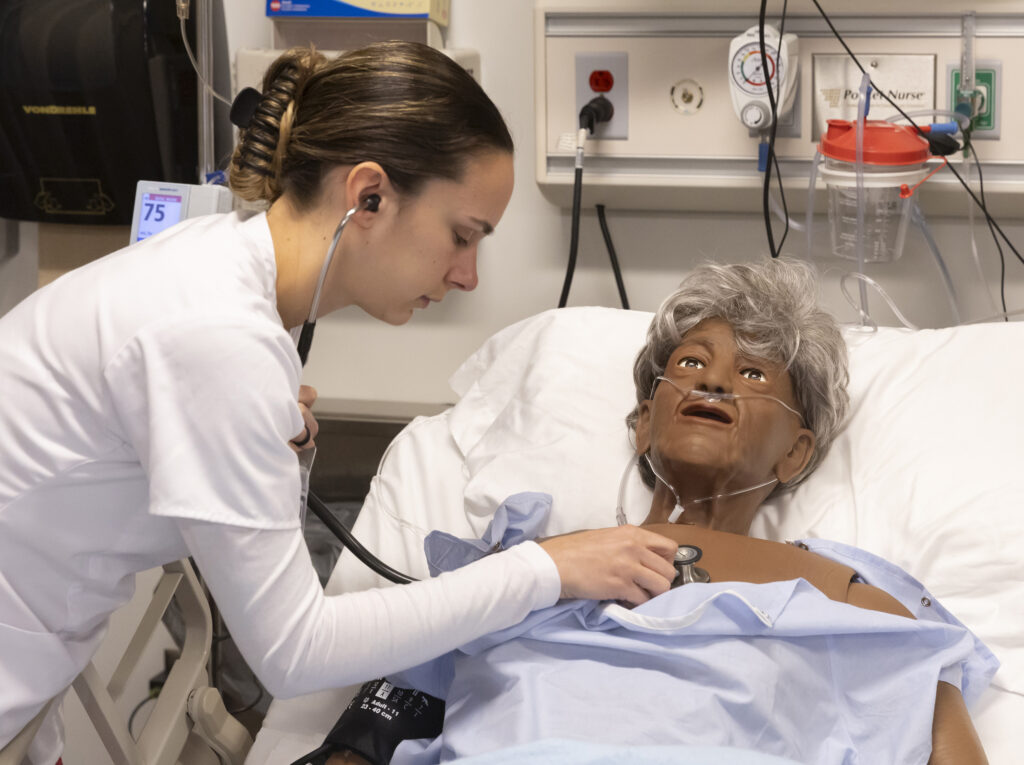Introduction
When Jamie Wilson graduated high school in rural Oklahoma, her future seemed uncertain. College wasn’t financially feasible, and local job opportunities were limited to minimum wage positions that offered little growth. “I felt stuck,” Jamie recalls. “Then my guidance counselor suggested I look into Kiamichi Technology.” Six months later, Jamie was completing her practical nursing certification at the Hugo campus, with multiple job offers already lined up. Her starting salary? Nearly twice what her parents had ever earned.
Stories like Jamie’s are common throughout Southeast Oklahoma, where Kiamichi Technology has been transforming lives and local economies since 1968. This career and technology education system, with campuses strategically located across the region, provides accessible, affordable training that bridges the gap between education and employment. By offering programs aligned with industry needs, Kiamichi Technology not only equips students with marketable skills but also supplies local businesses with qualified workers, creating a powerful cycle of opportunity and growth in communities that have historically faced economic challenges.
The Career and Technology Education Landscape
Career and technology education (CTE) has evolved dramatically from its vocational school roots to become a cornerstone of modern workforce development. In Oklahoma, the CareerTech system represents one of the most comprehensive educational frameworks in the nation, with Kiamichi Technology Centers playing a vital role in serving the southeastern region of the state.
The significance of this educational approach continues to grow as industries face persistent skills gaps. According to recent data, the economic impact of Oklahoma’s CareerTech programs approached $1 billion in 2023, with technology centers alone generating $939 million in direct and indirect economic impact and supporting over 8,500 jobs across the state.
Kiamichi Technology operates within this broader system but maintains a distinct identity focused on the unique needs of Southeast Oklahoma. With 11 campuses strategically positioned across the region, Kiamichi Technology serves a diverse population that includes high school students, adult learners, businesses, and community members seeking personal enrichment.
The impact of this educational model is reflected in Kiamichi’s impressive statistics:
- 2,218 full-time students enrolled
- 93% positive placement rate for graduates
- $20.10 average first-year hourly wage
- 17,563 short-term course enrollments
- 561 local businesses served through customized training
These numbers translate into tangible improvements for both individual career prospects and the regional economy. With a focus on hands-on training that directly connects to employment opportunities, Kiamichi Technology has established itself as an essential institution for workforce development in a region that has historically faced economic challenges.
Key Programs and Educational Offerings
Comprehensive Career Training Programs
Kiamichi Technology’s core offerings include full-time career training programs that combine theoretical knowledge with practical, hands-on skills development. These programs typically take two to four semesters to complete and are available to both high school students and adults.
The range of programs reflects the diverse needs of the regional economy:
- Health Sciences: Programs include Practical Nursing, Health Science Education, and specialized medical certifications. These offerings address critical healthcare workforce shortages in rural Oklahoma while providing graduates with stable, well-paying career paths.
- Industrial and Technical Trades: Options such as Diesel Technology, Automotive Collision Technology, HVAC, Construction Technology, and Heavy Equipment Operation provide training for in-demand skilled trades that form the backbone of the regional economy.
- Information Technology and Media: Interactive Media and related programs prepare students for careers in the growing digital economy, allowing them to work remotely while remaining in their communities.
The structure of these programs is designed to maximize accessibility and success. High school students can attend at no cost, while adult learners may qualify for various financial aid options and scholarships. All programs emphasize industry-recognized credentials and certifications that translate directly to employment opportunities.
Short-Term Training and Continuing Education
Beyond full-time programs, Kiamichi Technology offers an extensive catalog of short-term courses that provide specialized skills training and certification. These courses serve adults looking to:
- Transition to new careers
- Enhance existing skills
- Maintain professional certifications
- Explore new interests
With over 17,500 short-term course enrollments annually, these offerings represent a significant component of Kiamichi’s educational impact. Courses range from industry-specific certifications like commercial driver’s licensing to professional development in areas such as real estate and healthcare continuing education.

Business and Industry Partnerships
A distinguishing feature of Kiamichi Technology is its deep integration with regional business needs. The institution’s Workforce and Economic Development teams collaborate with employers to develop customized training solutions that address specific workforce challenges.
These partnerships take several forms:
- Custom-designed training programs for specific employer needs
- Industry-specific certifications delivered on-site or at Kiamichi campuses
- Safety training and compliance education
- Leadership development and management training
This business-focused approach has enabled Kiamichi to serve 561 local businesses annually, making the institution a key economic development resource for the region.
Specialized Support Services
Recognizing that educational success often requires more than just technical training, Kiamichi Technology has developed robust support services for students. Notable among these is the Pre-Employment Transition Services (Pre-ETS) program, which was named the 2024 Workforce Partner of the Year by the Oklahoma Department of Rehabilitation Services.
This program specifically supports students with disabilities by providing:
- Job readiness training
- Career exploration activities
- Self-advocacy development
- Workplace readiness skills
- Work-based learning experiences
With nine specialists serving Southeast Oklahoma, the Pre-ETS program impacted nearly 2,000 students in the previous year, demonstrating Kiamichi’s commitment to accessible education for all community members.
Real-Life Applications
For Individual Students
The impact of Kiamichi Technology on individual students often represents transformative life changes. Consider Melissa Pierce, who began her journey in a nursing program at Kiamichi Tech and eventually advanced to become an Advanced Practice Registered Nurse.
“Kiamichi Tech was the beginning of my love of nursing,” Pierce explains. “The instructors’ focus on ethical and responsible practice left a lasting impact. They instilled my ‘what would a prudent nurse do’ mentality that I still adhere to today.”
For high school students, Kiamichi offers:
- Free access to career training during high school years
- Dual credit opportunities that apply toward both high school graduation and career certification
- Early exposure to professional environments
- Development of workplace-ready skills before graduation
The result is a significant advantage in the job market, with many students securing employment offers before they even complete their programs. With a 99% graduation rate and 87% college enrollment for those who choose to continue their education, Kiamichi’s impact on student outcomes is substantial.
For Regional Businesses
Local employers benefit from Kiamichi Technology in multiple ways:
- Workforce Pipeline: Businesses gain access to a steady stream of qualified workers with specific skills aligned to industry needs. This addresses persistent workforce shortages that have challenged rural communities.
- Customized Training: Companies can partner with Kiamichi to develop training programs specifically designed for their unique processes and technologies, enabling workforce development that precisely matches business requirements.
- Economic Development Support: Through initiatives like the APEX Accelerator program, Kiamichi helps small businesses connect with government contracting opportunities, expanding their market reach and growth potential.
One example is a recent procurement outreach event hosted at the McAlester campus, where over 40 small business representatives learned about accessing government contracts—an opportunity that might otherwise be unavailable to rural enterprises.
For Rural Communities
The presence of Kiamichi Technology campuses throughout Southeast Oklahoma creates ripple effects that benefit entire communities:
- Economic Resilience: By training workers for in-demand fields, Kiamichi helps communities adapt to changing economic conditions and industrial transitions.
- Healthcare Access: Programs in nursing and health sciences address critical healthcare workforce shortages in rural areas, improving community access to essential services.
- Business Growth: The availability of a skilled workforce makes communities more attractive for business expansion and relocation, supporting broader economic development goals.
- Educational Attainment: For communities with historically lower rates of post-secondary education, Kiamichi provides an accessible pathway to career advancement without requiring relocation to urban centers.

For Specific Industries
Different economic sectors experience unique benefits from Kiamichi’s programs:
Healthcare
In a region with persistent healthcare workforce shortages, Kiamichi’s nursing and health science programs provide essential personnel for hospitals, clinics, and long-term care facilities. Students like Bailee Wilson at the Hugo campus gain hands-on clinical experience that prepares them for immediate employment upon graduation.
Manufacturing and Construction
Programs in welding, construction technology, and industrial maintenance supply skilled workers for manufacturing facilities and construction companies throughout the region. The hands-on training model ensures graduates can contribute productively from their first day on the job.
Transportation and Logistics
With offerings in diesel technology, commercial driving, and heavy equipment operation, Kiamichi supports the transportation infrastructure that connects Southeast Oklahoma to broader markets. These programs address critical workforce shortages in sectors essential to regional commerce.
Technology Sector
Interactive Media and related programs prepare students for careers in digital design, information technology, and media production—allowing them to participate in the digital economy while remaining in their communities.
Future Outlook
The next five years promise significant developments for Kiamichi Technology and career education in Southeast Oklahoma:
Expanding Digital Integration
As technology continues to transform every industry, Kiamichi Technology is positioning itself to prepare students for an increasingly digital workplace:
- Enhanced simulation technologies will provide even more realistic training environments
- Virtual reality applications will allow students to practice complex procedures in safe, controlled settings
- Remote learning options will expand to increase accessibility for students in the most rural areas
- Industry partnerships will focus on emerging technologies specific to each field
This digital integration extends beyond simply teaching technology skills to incorporating digital tools throughout all programs, ensuring every graduate is prepared for technology-enhanced workplaces.
Growing Healthcare Focus
With healthcare needs intensifying in rural Oklahoma, Kiamichi Technology plans to expand its healthcare education offerings:
- Additional specialized certifications in high-demand healthcare niches
- Expanded clinical partnerships with regional healthcare providers
- New simulation laboratories equipped with state-of-the-art training tools
- Increased capacity in existing nursing programs to address critical shortages
These expansions will help address persistent healthcare workforce challenges while providing stable, well-paying career opportunities for residents.
Entrepreneurship and Small Business Development
Recognizing that many graduates will create their own opportunities, Kiamichi is strengthening its entrepreneurship education components:
- Business startup incubators on select campuses
- Mentorship programs connecting students with successful local entrepreneurs
- Specialized training in small business management and operations
- Ongoing support for graduates who launch their own enterprises
This focus acknowledges the importance of entrepreneurship in creating economic resilience in rural communities and builds on success stories like Andy DuVall, who launched his own business after completing welding training at Kiamichi.
Deeper Industry Integration
Already closely aligned with industry needs, Kiamichi plans to further strengthen these connections:
- Expanded apprenticeship and internship opportunities integrated directly into training programs
- Industry co-developed curriculum that ensures training remains cutting-edge
- Increased on-site training delivered at employer locations
- Regular industry advisory committees for all major program areas
These partnerships will ensure that training continues to evolve with changing industry requirements and technologies.
Challenges and Limitations
Despite its successes, Kiamichi Technology faces several significant challenges that must be addressed to maximize its impact:
Geographic and Access Barriers
Southeast Oklahoma’s rural nature creates inherent challenges:
- Transportation difficulties for students without reliable vehicles
- Limited public transportation options in most communities
- Internet connectivity gaps that affect digital learning opportunities
- Distance between campuses and potential students in the most remote areas
Potential solutions include:
- Expanded transportation assistance programs
- Satellite training locations in partnership with local businesses
- Enhanced online learning options with offline capabilities
- Mobile training units that can bring education to remote communities
Funding Constraints
As a publicly funded institution, Kiamichi Technology faces ongoing financial challenges:
- Fluctuating state appropriations that make long-term planning difficult
- Capital improvement needs for aging facilities at some campuses
- Equipment costs for high-tech training environments
- Competitive salary requirements to attract and retain qualified instructors
These constraints can be addressed through:
- Increased private industry partnerships and equipment donations
- Grant funding for specific program expansions
- Alumni engagement and private philanthropy
- Shared resource models across campuses
Rapidly Changing Industry Requirements
The accelerating pace of technological change creates challenges for any education provider:
- Constantly evolving skill requirements in technical fields
- Equipment that quickly becomes outdated
- Instructors who must continuously update their own knowledge
- Curriculum that requires frequent revision
Kiamichi addresses these challenges through:
- Regular industry advisory committee meetings
- Instructor professional development programs
- Flexible curriculum frameworks that can adapt quickly
- Emphasis on fundamental skills that transcend specific technologies
Public Awareness and Perception
Despite its impact, career and technology education still faces perception challenges:
- Outdated views of vocational education as a “lesser” option than four-year college
- Limited understanding of the earning potential in skilled trades
- Parental and counselor biases toward traditional college pathways
- Incomplete information about career opportunities in technical fields
Addressing these challenges requires:
- Targeted outreach to middle and high school students and parents
- Success story highlighting through various media channels
- School counselor education programs
- Data-driven information about employment outcomes and earnings
Conclusion
Kiamichi Technology represents far more than an educational institution—it serves as a vital economic engine and opportunity creator throughout Southeast Oklahoma. By bridging the gap between education and employment, Kiamichi enables individuals to build rewarding careers without leaving their communities while simultaneously supplying local businesses with the skilled workforce they need to thrive.
The impact is visible in impressive statistics—93% placement rates, $20.10 average starting wages, and over 17,000 annual short-term enrollments—but the true measure comes through the transformed lives of students like Melissa Pierce, Tyson Sustaire, and countless others who have found pathways to success through Kiamichi’s programs.
Looking ahead, Kiamichi Technology is well-positioned to adapt to changing workforce needs while remaining true to its core mission of “preparing people for success, every step of the way.” As digital transformation continues across industries, healthcare needs intensify, and entrepreneurial opportunities expand, Kiamichi will continue evolving its programs to ensure Southeast Oklahoma residents have access to the education they need for tomorrow’s careers.
For communities throughout the region, Kiamichi Technology will remain an essential institution—one that creates economic resilience, provides pathways to prosperity, and helps preserve the vitality of rural Oklahoma through accessible, high-quality career education.
Share your thoughts in the comments about how career and technology education has impacted your community, or subscribe to our newsletter for regular updates on workforce development innovations and success stories from Southeast Oklahoma.
Also read: [The Rising Value of Technical Certifications in Today’s Job Market]
Frequently Asked Questions
What programs does Kiamichi Technology offer for high school students?
Kiamichi Technology provides high school students with free access to a wide range of career training programs that can be completed alongside their regular high school curriculum. Students typically attend their home high school for part of the day and then travel to the nearest Kiamichi campus for specialized training. Available programs include Health Science Education, Automotive Technology, Construction Technology, Information Technology, Cosmetology, Culinary Arts, and many others. What makes this opportunity particularly valuable is that high school students can graduate with both their diploma and industry-recognized certifications or licenses that make them immediately employable. Many students also benefit from dual credit arrangements where their Kiamichi Technology coursework counts toward both high school graduation requirements and career certifications. With a 99% graduation rate for high school students who participate in these programs, this educational pathway has proven highly effective at helping young people launch successful careers.
How does Kiamichi Technology support adult learners who are changing careers?
Adult learners seeking career changes find comprehensive support at Kiamichi Technology through programs specifically designed to accommodate their unique needs. Full-time career programs for adults typically run two to four semesters and lead to industry-recognized certifications or licenses. Understanding the financial challenges career-changers often face, Kiamichi offers various funding options including scholarships, payment plans, tribal education assistance, and connections to workforce development grants. The institution also provides flexible scheduling options including evening courses at many campuses, allowing adults to maintain employment while training for their new career. Support services extend beyond financial assistance to include career counseling, job placement assistance, and connections with employers seeking qualified workers. This comprehensive approach has contributed to Kiamichi’s impressive 93% positive placement rate, meaning that the vast majority of adult graduates successfully transition into their new career fields, with an average starting wage of $20.10 per hour—significantly above typical entry-level positions in the region.
What resources does Kiamichi Technology offer for local businesses?
Local businesses throughout Southeast Oklahoma benefit from Kiamichi Technology’s extensive business support services, which go far beyond simply providing trained graduates. Through their Workforce and Economic Development teams, Kiamichi partners with companies to create customized training solutions tailored to specific business needs. These services include specialized technical training, safety certifications, leadership development, and process improvement education. Training can be delivered either at Kiamichi campuses or on-site at business locations, maximizing convenience and relevance. The Oklahoma APEX Accelerator program, hosted at Kiamichi, helps small businesses navigate government contracting opportunities, expanding their potential market reach. Additionally, companies can access Kiamichi’s facility spaces for meetings, events, and specialized training needs. Last year alone, 561 local businesses utilized these services, making Kiamichi an integral part of the regional economic development ecosystem. These partnerships create a virtuous cycle: businesses gain skilled workers and specialized training, while students benefit from employment opportunities and real-world learning experiences.
How does Kiamichi Technology compare to traditional four-year colleges in terms of career preparation?
While traditional four-year colleges and Kiamichi Technology both provide valuable educational pathways, they differ significantly in approach, timeline, and focus. Kiamichi’s career-focused programs typically require two to four semesters rather than four years, allowing students to enter the workforce and begin earning much sooner. This accelerated timeline also means substantially lower costs and minimal student debt compared to university degrees. The hands-on, applied learning model at Kiamichi emphasizes practical skills that transfer directly to workplace environments, with curriculum developed in close collaboration with industry partners to ensure relevance. For many technical and skilled trade careers, Kiamichi’s industry-recognized certifications provide equal or better employment opportunities than general bachelor’s degrees. However, it’s worth noting that Kiamichi and four-year institutions increasingly work in complementary ways, with many students using Kiamichi’s programs as a foundation before pursuing further specialized education. The optimal choice depends entirely on a student’s career goals, learning preferences, financial situation, and timeline—with Kiamichi providing an efficient, affordable pathway to many in-demand careers.
What success have Kiamichi Technology graduates found in their careers?
Graduates from Kiamichi Technology programs have achieved remarkable success across diverse career paths, as evidenced by both statistics and individual success stories. With a 93% positive placement rate and average first-year hourly wages of $20.10, Kiamichi alumni consistently secure quality employment opportunities. Many graduates have advanced to leadership positions, like Eric Pogue, who progressed from student to Executive Director at Kiamichi. Others have launched successful businesses, such as Andy DuVall, who established his own enterprise after completing welding training. In healthcare, graduates like Melissa Pierce have built progressive careers, starting as practical nurses before advancing to roles as Advanced Practice Registered Nurses. Technical program graduates frequently report rapid advancement and earning potential that equals or exceeds that of many four-year degree holders, particularly in high-demand fields like HVAC, diesel technology, and industrial maintenance. The combination of industry-recognized credentials, hands-on experience, and employer relationships has proven particularly effective at launching graduates into sustainable, well-paying careers that support families and communities throughout Southeast Oklahoma.

